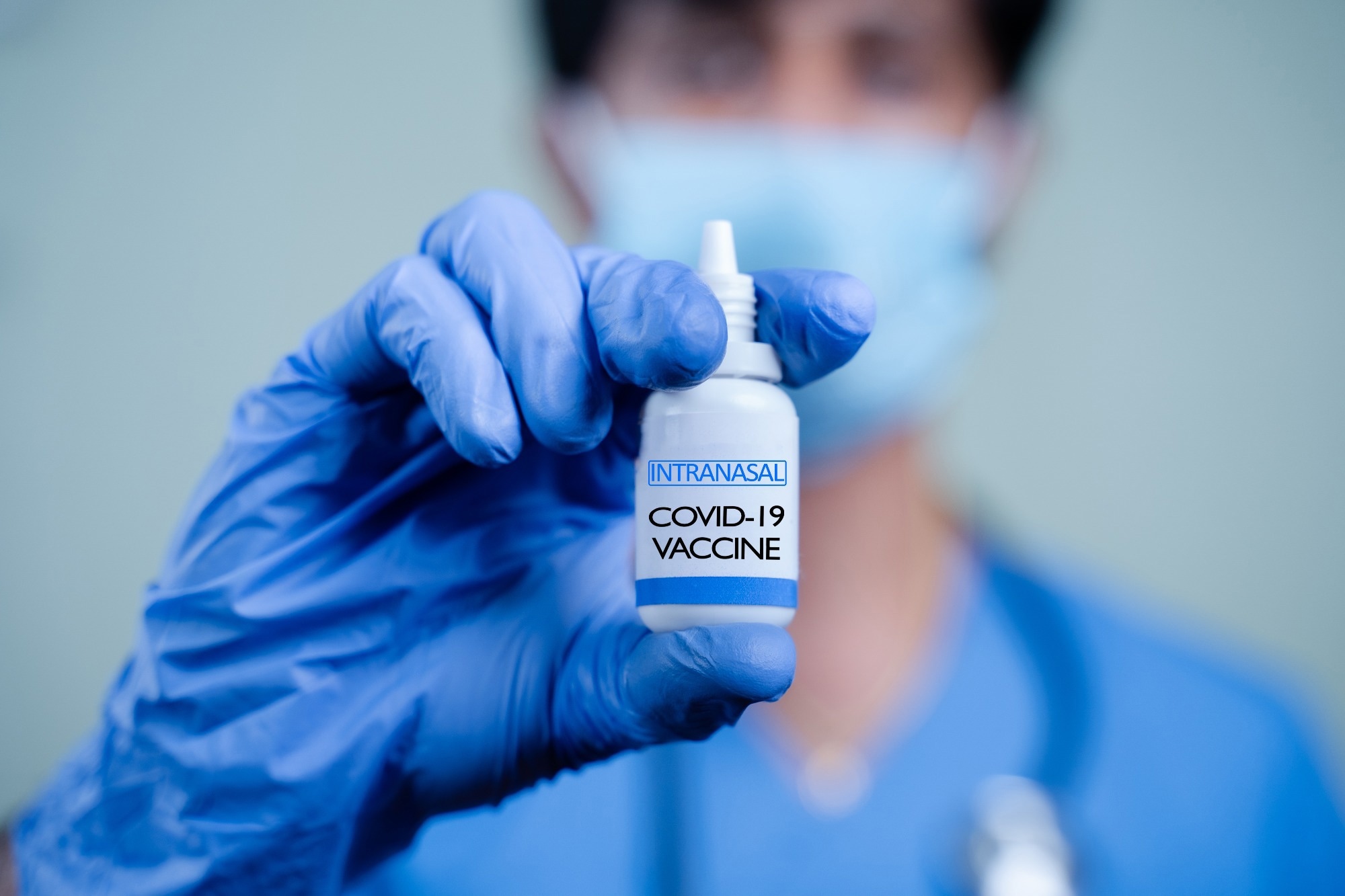A recent study published in the Nature Biomedical Engineering journal illustrated a novel inhalable SARS-CoV-2 vaccine candidate centered on exosomes (Exos) coupled with recombinant severe acute respiratory syndrome coronavirus 2 (SARS-CoV-2) receptor-binding domain (RBD).
 Study: Exosomes decorated with a recombinant SARS-CoV-2 receptor-binding domain as an inhalable COVID-19 vaccine. Image Credit: WESTOCK PRODUCTIONS / Shutterstock
Study: Exosomes decorated with a recombinant SARS-CoV-2 receptor-binding domain as an inhalable COVID-19 vaccine. Image Credit: WESTOCK PRODUCTIONS / Shutterstock
Background
The COVID-19 pandemic affects almost every aspect of daily life for the global population as hundreds of thousands of people die each day from coronavirus disease 2019 (COVID-19). There are currently about 36 SARS-CoV-2 vaccines available across the globe.
The initially approved two SARS-CoV-2 messenger ribonucleic acid (mRNA) vaccines, i.e., Moderna and Pfizer/BioNTech, need a cold chain for storage and transportation. Besides, they trigger systemic immunity through intramuscular injection.
Early pathogen penetration is influenced significantly by the immune response of the airway mucosa, which results in humoral and cell-mediated immune responses that result in systemic reactions. As respiratory droplets are the primary means of SARS-CoV-2 transmission and the respiratory mucosa is the initial site of viral entry, inadequate mucosal immunity may restrict the effectiveness of intramuscularly delivered COVID-19 vaccinations.
About the study
The goal of the current study was to create a SARS-CoV-2 vaccine option that effectively stimulates mucosal immunity, enables a non-invasive, needle-free delivery method, and is lyophilizable and room-temperature (r.t.)-stable for months. The scientists developed an inhalable vaccine by combining SARS-CoV-2 RBD with lung spheroid cell-derived Exos (LSC-Exo) surface, i.e., RBD-Exo, to create a virus-like particle (VLP) that mimics the morphology of the native virus.
From a human lung donor sample, the team produced LSCs. They have previously used rodent models of idiopathic pulmonary fibrosis (IPF) to analyze the biodistribution and safety of LSC-Exo. LSC-Exo was native nanoparticles (NPs) for lung therapeutics obtained from distinct lung cell populations, such as type I and II pneumocytes and mesenchymal cells.
The researchers validated optimal Exo delivery across the rodent lung's parenchyma and bronchi. They evaluated the retention and biodistribution of NPs (liposomes or LSC-exosomes) in the murine lung. Furthermore, microscopic visualization and ex vivo imaging were conducted using red fluorescent protein (RFP) loaded commercially available liposomes (RFP-Lipo) and LSC-Exo (RFP-Exo).
Results and conclusions
According to the study results, the SARS-CoV-2 RBD-Exo vaccine triggered cellular and humoral immune reactions that protected mice from an infection with a SARS-CoV-2 mimic and a live SARS-CoV-2 infection in a hamster model.
RBD-Exo vaccination resulted in significant concentrations of RBD-selective immunoglobulin A (IgA) and CD8+ and CD4+ T cells and potent IgG antibodies in the lung. These components were essential for preventing SARS-CoV-2 D614G and wild-type variant infection and defending the lungs against the viral invasion of the airway mucosa. Based on the data presented in this study, if Exos is the vaccine carrier, inhalation was a safe and reliable approach for inducing a potent mucosal immunity.
The authors discovered Exo biodistribution over liposomes in the lungs of healthy CD1 mice. They selected Exos as the foundation of the VLPs they created because of their exceptional lung retention and improved specificity of antigen-presenting cells (APCs). The average diameter of Exos was marginally enhanced by RBD decorating, according to nanoparticle tracking analysis (NTA). The study results validated the generation of RBD-Exo VLPs.
The present data depicted that RBD-Exo had significant physical and antigenic stability at all evaluated temperatures, possibly outperforming the currently approved COVID-19 vaccines. Besides, lung dendritic cells (DCs) collected and processed RBD-Exo preferentially. In contrast to RBD-Exo, the team also discovered little free RBD acquisition by the APCs present in the lungs.
Ex vivo imaging and confocal laser scanning microscopy (CLSM) implied that RBD-Exo VLP vaccinations favored the quick elimination of SARS-CoV-2 mimics in CD1 mice. Additionally, nebulization administration caused a faster clearance of SARS-CoV-2 mimics in all groups than intravenous (IV) injection. This inference indicated that nebulization was a more effective and targeted method of delivering RBD-Exo vaccines. Inhaling RBD-Exo VLPs caused the highest induction of RBD-selective IgG antibodies in mouse sera, according to an enzyme-linked immunosorbent assay (ELISA).
While RBD-Exo nebulization generated a type 1 T helper (Th1)-biased immune reaction, RBD-Exo IV injection triggered a Th2-skewing immune response with selective IgG1 antibody production. Compared to RBD-Exo IV therapy, RBD-Exo VLP significantly increased the generation of RBD-selective IgA antibodies in serum complementary to the IgG isotype.
The current findings showed that inhaling RBD-Exo led to the production of anti-RBD neutralizing antibodies and secretory IgA (SIgA) responses. RBD-Exo with long-term storage (LTS) and RBD-Exo generated Th1-skewed cellular immune reactions in the mouse lungs. The RBD-Rhodamine (RhB) treatment group showed a decreased RBD signal in the main organs compared to the RBD-Exo nebulization cohort.
Splenocytes from RBD-Exo inhalation-treated animals had higher percentages of CD40+, CD86+, and CD80+ DCs, implying that more DCs were stimulated. With no allergic-type reactions, RBD-Exo inhalation strongly triggered a systemic T-cell immune reflex that can further safeguard the participants from viral replication. The histology data firmly suggested that RBD-Exo vaccination could significantly prevent live SARS-CoV-2 infection in hamster lungs. Moreover, RBD-Exo VLP-induced IgA antibodies with greater cross-activity compared to IgG antibodies.
Overall, the investigators noted that r.t. and lyophilizable COVID-19 vaccines, such as the SARS-CoV-2 RBD-Exo VLPs developed in the current study, have a longer shelf life and hence, could lower transportation costs, making them more widely available.